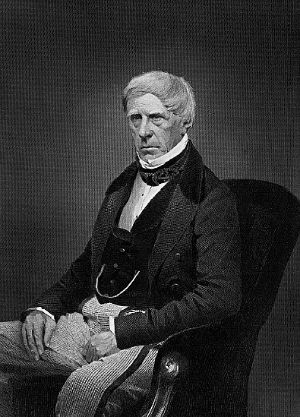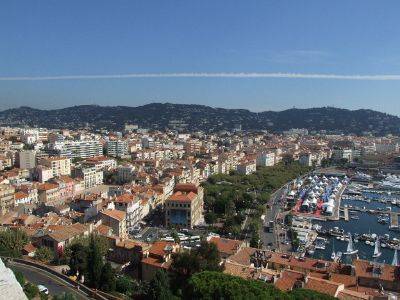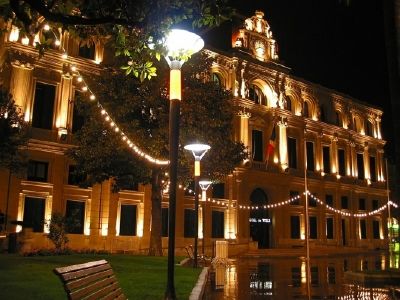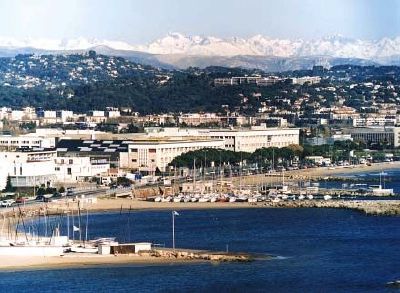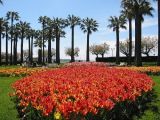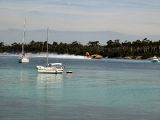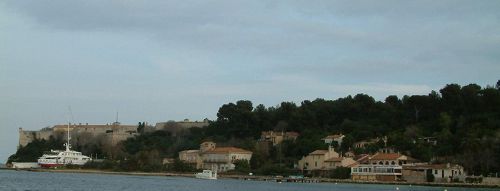Difference between revisions of "Cannes" - New World Encyclopedia
Mike Butler (talk | contribs) |
Rosie Tanabe (talk | contribs) |
||
| (82 intermediate revisions by 6 users not shown) | |||
| Line 1: | Line 1: | ||
| + | {{Copyedited}}{{Images OK}}{{Submitted}}{{Approved}} | ||
| + | |||
{{French commune | {{French commune | ||
| − | |nomcommune=Cannes<br>[[Image:Cannes France.jpg|250px|]] | + | |nomcommune=Cannes<br/>[[Image:Cannes France.jpg|250px|]] |
|région=[[Provence-Alpes-Côte d'Azur]] | |région=[[Provence-Alpes-Côte d'Azur]] | ||
|département=[[Alpes-Maritimes]] | |département=[[Alpes-Maritimes]] | ||
| Line 7: | Line 9: | ||
|insee=06029 | |insee=06029 | ||
|cp=06400 | |cp=06400 | ||
| − | |maire= | + | |maire=David Lisnard |
| − | |mandat= | + | |mandat=2020–2026 |
|intercomm= | |intercomm= | ||
|longitude=7.012753 | |longitude=7.012753 | ||
| Line 17: | Line 19: | ||
|hectares=1962 | |hectares=1962 | ||
|km²=19.62 | |km²=19.62 | ||
| − | |sans= | + | |sans=74,545 |
| − | |date-sans= | + | |date-sans=2019 |
| − | |dens= | + | |dens=3,800| |
| − | |date-dens= | + | |date-dens=2019}} |
| − | '''Cannes''' | + | '''Cannes''' is a French commune located in the department of Alpes-Maritimes and the region of Provence-Alpes-Côte d'Azur. It is is one of the best-known cities of the [[French Riviera]] in southeastern [[France]]. Located on the [[Mediterranean Sea]], it is 22 miles (36 km) from [[Nice]], 34 miles (55 km) from [[Monaco]] and 37 miles (60 km) from the [[Italy|Italian]] border. |
| + | |||
| + | Essentially a modern resort town, it was originally settled by Celts, Greeks, and Romans. Along with the [[Lérins Islands]], it has had a long involvement with [[monasticism|monastic]] Christianity, although most of the city’s growth has occurred since the mid-1800s, when it became popular as a winter resort for the British. | ||
| + | {{toc}} | ||
| + | The city is well known for the annual [[Cannes Film Festival]], during which time its population swells from 70,000 to nearly 170,000. The festival was proposed during, and established following, [[World War II]] to oppose the interference of the [[fascist]] governments of [[Germany]] and [[Italy]] in film selection. | ||
==Geography== | ==Geography== | ||
| − | + | The name Cannes may derive from "canna," a [[Reed (plant)|reed]], because the shore was once covered with reeds. Cannes is located on the crescent of the Gulf of Napoule, and is backed by a line of wooded hills. | |
| − | The name may derive from "canna" | ||
| − | Cannes has a [[ | + | Cannes has a Mediterranean [[climate]], with January temperatures ranging from 43°F to 55°F (6°C to 13°C), and July, from 68°F to 81°F (20°C to 27°C). Despite high daytime [[temperature]]s during summer, from May to September, a [[Mediterranean]] breeze keeps summer evenings pleasant and cool. In winter, from December to February, the weather is mild. Both seasons have a relatively low rainfall, and most [[rain]] falls during October and November. Average annual precipitation is 21 inches (530mm). |
| − | + | Off the coast from Cannes, the [[Lérins Islands]] include the [[Île Sainte-Marguerite]] and the [[Île Saint-Honorat]], as well as the smaller [[Îlot Saint-Ferréol]] and [[Îlot de la Tradelière]], which are uninhabited. | |
| − | |||
| − | |||
| − | + | The city of Cannes covers an area of 7.5 square miles (19.62 square kilometers). The 7.4-mile (12km) long, beautiful and glamorous stretch of La Croisette is the main tourist attraction. A breathtaking waterfront avenue lined with [[palm]] trees, La Croisette is known for its picturesque beaches studded with world-class resorts, restaurants, cafes, and designer boutiques. | |
| − | + | Le Suquet is the quaint historic quarter, built on the site of a [[Ancient Rome|Roman]] military camp. It is the highest point in Cannes where lies the remains of a fortified tower, and the twelfth-century Chapel of St Anne. Le Suquet offers tourists breathtaking view of La Croisette. More peaceful residential neighborhoods, such as La Bocca, surround the lively city center. | |
| + | ==History== | ||
| + | [[Image:Rocks on the beach in Cannes.jpg|thumb|right|400px|The rocky beaches in Cannes]] | ||
| + | [[Image:Henry Peter Brougham.jpg|thumb|right|300px|Lord Brougham]] | ||
| − | The | + | The Cannes area was settled by the second century B.C.E., when Ligurian tribesmen created a settlement known as Aegitna. Later, the area was occupied by [[Phocaeans]], from central [[Greece]], and [[Celts]], and was a [[fishing]] village, used as a link with the [[Lérins Islands]]. |
| − | + | In 69 C.E., the area became the scene of violent conflict between the troops of [[Othos]], a village in Karpathos, Greece, and Roman Emperor [[Vitellius]]. Roman tombs in the area suggest Romans had an outpost on Le Suquet hill. The Lérins islands were inhabited during [[Ancient Rome|Roman]] times. | |
| − | + | [[Honoratus|Saint Honoratus]] (350-429), who went to one of the islands as a hermit, founded the [[monastery of Lérins]] on the Île de Saint-Honorat, around the year 410. According to tradition, [[Saint Patrick]] (378-493), patron of [[Ireland]], studied there. It was in this monastery that [[Saint Porcarius]] lived and probably was killed during an invasion by [[Muslim]] sea raiders around 732. | |
| − | + | A fortified [[monastery]] was built between the eleventh and fourteenth centuries. An attack by Muslim sea raiders in 891, who remained until the end of the tenth century, devastated the country around Canua. The insecurity of the Lérin islands forced the monks to settle on the mainland, at Le Suquet. A castle was built in 1035 to fortify the city, by then known as Cannes, to guard against Muslim raiders. Construction of two towers on the Lérin Islands was started at the end of the eleventh century. One took a century to build, the other three centuries. Around 1530, Cannes became independent of control by the monks. | |
| − | [[ | ||
| − | |||
| − | |||
| − | |||
| − | |||
| − | In | + | In 1635, the Île de Saint-Honorat was captured by the [[Spain|Spanish]] and the monks were expelled. They returned from exile in [[Vallauris]] two years later, when the island was retaken by the French. |
| − | [[ | + | The Île Sainte-Marguerite has a [[fortress]] where [[The Man in the Iron Mask]] was held [[captivity|captive]] from 1687 until he died in 1703. Under the [[French Revolution]] (1789–1799), the Île Sainte-Marguerite and the Île Saint-Honorat were renamed the Île [[Jean-Paul Marat|Marat]] and the Île [[Louis-Michel Lepeletier|Lepeletier]], after secular [[martyrdom|martyrs]]. |
| − | + | French general [[Napoleon Bonaparte]] (1769-1821) camped with his army outside the village in February 1815, on the first night away from [[Elba]]. | |
| − | + | English Lord [[Henry Brougham]] (1778-1868), who became [[Lord Chancellor]] of the [[United Kingdom]], began Cannes' reputation as a resort. When prevented by quarantine rules from entering [[Nice]] in 1834, he instead went to the nearby fishing village of Cannes. He enjoyed the experience so much that he returned every winter for 34 years. He bought land at the Croix des Gardes and constructed the villa Eleonore-Louise. His work to improve living conditions attracted the English aristocracy, who also built winter residences. | |
| − | + | In June 1838, construction of Cannes harbor began. The population increased as people migrated there for work. | |
| − | + | In 1859, the [[Bishop of Fréjus]] bought the Île de Saint-Honorat and sought to re-establish a religious community there. Ten years later, a [[Cistercian]] community was founded, which has remained there since. A monastery was built there during the nineteenth century. | |
| − | + | In March 1898, the harbor was completed, and the Casino Municipal, a luxury establishment for the rich winter clientèle, and the Esplanade des Alliés, were built on each side of the harbor. At that time, railways were completed in Cannes, and streetcars were running. The Boulevard Carnot, the Rue d'Antibes, and the [[Carlton Hotel, Cannes|Carlton Hotel]] on the [[Promenade de la Croisette]] were constructed. | |
| − | + | At that time Cannes depended on sea trade, [[fishing]], [[agriculture]], and small enterprises. | |
| − | + | With the twentieth century came luxury hotels, such as the Miramar and the Martinez, a sports center, a post office, and schools. There were fewer British and German tourists after [[World War I]] (1914-1918), but more Americans visited. Winter [[tourism]] gave way to summer tourism and the summer casino at the Palm Beach was constructed. | |
| − | + | The city council had the idea of an international film festival shortly before [[World War II]] (1939-1945), which has become an annual event. The first opened on September 20, 1946, held in the Casino Municipal. The casino was demolished and replaced by the new Palace in 1979. | |
| − | + | ==Government== | |
| + | [[Image:Cannes 57.jpg|400px|thumb|right|Aerial view of Cannes]] | ||
| + | [[Image:Cannes Town Hall .jpg|thumb|right|400px|Hôtel de Ville (The City Hall).]] | ||
| + | Cannes, including the Lérins Islands, is a commune of the Alpes-Maritimes département in the [[Provence-Alpes-Côte-d'Azur]] région of metropolitan (European) [[France]]. Cannes is governed by a municipal council and a mayor. The Alpes-Maritimes département is governed by a locally elected general council and a president. The general council passes laws, and is administratively responsible for departmental employees and land, manages subsidized housing, public transportation, and school subsidies, and contributes to public facilities. The Provence-Alpes-Côte-d'Azur région is governed by a directly elected regional council and a president. | ||
| − | + | In the French system of local government, responsibility is shared among different levels of administration. For instance, in the field of education, communes run public elementary schools, while départements run public junior high schools and régions run public high schools, but only for the building and upkeep of buildings; curricula and teaching personnel are supplied by the national Ministry of Education. | |
| − | == | + | ==Economy== |
| − | + | ||
| − | Cannes | + | Cannes is a resort town, [[tourism]] is the city’s main source of revenue, and foreign visitors make up 40 percent of the traffic. There are several casinos. |
| − | + | The well-known [[Cannes Film Festival]], which takes place there every year in May, is one of a number of large annual events. A [[television]] festival takes place in the last week of every September. [[Midem]] is a large market for disc and music. Mipim, which takes place each March, is a market for commercial buildings, apartments, and rental villas. | |
| − | + | The area around Cannes has developed into a high-tech cluster. The technopolis of Sophia Antipolis lies in the hills beyond Cannes. The Film Festival is a major event for the industry. | |
| − | |||
| − | |||
| − | |||
| − | |||
| − | |||
| − | |||
| − | |||
| − | The area around Cannes has developed into a high-tech cluster. The technopolis of Sophia Antipolis lies in the hills beyond Cannes. The Film Festival is a major event for the industry. | ||
| − | + | The Cannes Mandelieu Space Center is an industrial plant dedicated to [[spacecraft]] manufacturing, located in both Cannes and [[Mandelieu]]. The company began manufacturing [[aircraft]] in 1929. The center became increasingly involved in the [[Aerospace]] activities after the [[Second World War]], with [[satellite]]s becoming the plant's main product. | |
| − | + | Cannes had 6,500 companies in 2006, of which 3,000 were traders, artisans and service providers. In 2006, 421 new companies were registered. | |
| − | |||
| − | |||
| − | |||
| − | |||
| − | |||
| − | |||
| − | |||
| − | |||
| − | + | The city has an international market for [[flower]]s, especially [[mimosa]], which has flourished in the region since its introduction from [[Santo Domingo]] in 1835. | |
| − | The | ||
| − | + | TGV rail services provide access from major French cities, as well as from [[Brussels]], [[Milan]], [[Basel]], [[Rome]], and [[Venice]]. The journey by road from [[Paris]] takes eight hours via the A8 motorway. Yachts and transatlantic liners visit Cannes harbor. Ferries are available from Bastia and Calvi in [[Corsica]]. The Cannes-Mandelieu Airport is located three miles (five km) west of Cannes and east of [[Mandelieu-la-Napoule]]. Located 15 miles from Cannes, the Nice Côte d’Azur Airport has close to ten million passengers a year. | |
| + | ==Cannes film festival== | ||
| + | {{Main|Cannes Film Festival}} | ||
| + | The Cannes Film Festival ([[French language|French]]: ''le Festival de Cannes''), founded in 1946, is one of the world's oldest, most influential, and prestigious [[film festival]]s alongside those of [[Venice Film Festival|Venice]] and [[Berlin International Film Festival|Berlin]]. The private festival is held annually (usually in the month of May) at the [[Palais des Festivals et des Congrès]]. | ||
| − | + | At the end of the 1930s, shocked by the interference of the [[fascism|fascist]] governments of [[Germany]] and [[Italy]] in the selection of films for the [[Venice Film Festival|Mostra de Venise]], [[Jean Zay]], the French Minister of National Education, decided to create an international [[cinematography|cinematographic]] festival in France. Cannes was selected as the location, and ''Le Festival International de Cannes'' was born. | |
| − | + | The Cannes Film Festival is organized in various sections. In the main event, known as "The Official Selection," in the main competition, 20 films compete for the [[Palme d'Or]]; in the "Un Certain Regard" section, 20 films are selected from various cultures; in the "Out of Competition" section, films are shown but do not compete; the "Special Screenings" section shows special-interest films; the "Cinéfondation" section includes about 15 short and medium-length motion pictures from film schools; and there is a Short Film Palme d'Or. | |
| − | + | The Parallel Sections are non-competitive programs which includes Cannes classics; world cinema; the Caméra d'Or that rewards competition" films on Macé beach. | |
| − | + | ==Society and culture== | |
| + | [[Image:Aero cannes.jpg|thumb|right|400px|The Cannes Mandelieu Space Center.]] | ||
| + | Nineteenth-century Cannes can still be seen in its grand villas, built to reflect the wealth and standing of their owners and inspired by anything from medieval castles to Roman villas. Lord Brougham’s Italianate Villa Eléonore Louise, one of the first in Cannes, was built between 1835 and 1839. Also known as the Quartier des Anglais, this is the oldest residential area in Cannes. Another landmark is the Villa Fiésole (known as the Villa Domergue) designed by Jean-Gabriel Domergue in the style of Fiesole, near [[Florence]]. | ||
| − | + | The cell of the [[Man in the Iron Mask]] can be visited in the Fort of St. Marguerite, now renamed the Musée de la Mer (Museum of the Sea). This [[museum]] houses discoveries from shipwrecks off the island, including Roman (first century B.C.E.) and Muslim (tenth century C.E.) [[ceramic]]s. | |
| − | + | Cistercian monks are the only inhabitants of the smaller, southern St. Honorat Island. Medieval vestiges remain in the stark church, which is open to the public, and in the ruins of the eleventh-century monastery on the sea’s edge. The monks divide their time between [[prayer]] and producing red and white [[wine]]s. | |
| − | + | The Musée d'Art et d'Histoire de Provence houses artifacts from prehistoric to present, in an eighteenth-century mansion. The Musée de la Castre has objects from the Pacific Atolls, [[Peru]]vian relics and [[Maya]]n pottery. Other venues include the Musée de la Marine, Musée de la Photographie and Musée International de la Parfumerie. | |
| − | The | ||
| − | + | Cannes is not renowned for traditional theater. However, there are small venue stage productions and it hosts short sketches during the annual International Actors’ Performance Festival. Popular theaters include the Espace Miramar and the Alexandre III. | |
| − | |||
| − | + | Other events of interest include: | |
| − | + | * The Carnival on the Riviera, which is an annual parade through the streets to mark the 21-day period prior to Shrove Tuesday. | |
| + | * The International Festival of Games, a festival of [[bridge]], belote, [[backgammon]], [[chess]], draughts, [[tarot]] and more, which takes place each February. | ||
| + | * The Festival de la Plaisance, which is an event for [[boating]] enthusiasts in the Vieux Port(September). | ||
| + | <gallery class="center" widths="200px"> | ||
| + | Image:Jardins de la croisette, Cannes.jpg|[[The Croisette gardens]] | ||
| + | Image:Ile st honorat.jpg|[[Saint Honorat Island]] | ||
| + | </gallery> | ||
| − | ====[[Île Sainte-Marguerite]] | + | ==Looking to the future== |
| − | + | [[Image:Marg2.JPG|thumb||500px|View of the [[Île Sainte-Marguerite]], including the Fort Royal and the village of Sainte-Marguerite.]] | |
| + | Settled by Celts, Greeks, and Romans, Cannes and the Lérins islands have had a long involvement with [[Monasticism|monastic]] Christianity, although most of the city’s growth, as a resort, has occurred over the past 170 years. | ||
| − | + | The Cannes Film Festival was established to oppose the interference of the [[Fascism|Fascist]] governments of [[Germany]] and [[Italy]] in film selection. As cinema continues to exert a strong influence on world culture, the festival can play an important role to either the improvement or degradation of world culture. | |
| − | |||
| − | + | With perhaps the world’s top film festival, a growing aerospace industry, and a steady influx of wealthy tourists, Cannes can expect to remain a wealthy town, and an important contributor to the powerful and wealthy nation of [[France]]. | |
| − | Cannes | ||
| + | ==References== | ||
| + | * Benecke, Amy M. ''Cannes and Its Surroundings''. Wentworth Press, 2019 (original 1908). ISBN 0526335750 | ||
| + | * Craig, Benjamin. ''Cannes - A Festival Virgin's Guide''. Cinemagine Media Publishing, 2018. ISBN 1999996100 | ||
| + | * Dewitte, Ysabel. ''The Story of the Four Towns: Nice, Monaco, Cannes, Menton''. London: John Hamilton, 1929. | ||
| + | * Servat, Henry-Jean. ''In the Spirit of Cannes''. New York: Assouline, 2004. ISBN 9782843236105 | ||
==External links== | ==External links== | ||
| − | + | All links retrieved November 25, 2023. | |
| − | + | * [https://www.cannes.com/en/index.html Cannes official site] | |
| − | * [ | + | * [https://www.festival-cannes.com/en/ Cannes Film Festival] {{fr icon}} {{en icon}} |
| − | * [ | + | * [https://www.canneslions.com/ Cannes Lions International Festival of Creativity] |
| − | * [ | ||
| − | |||
[[Category:Geography]] | [[Category:Geography]] | ||
[[Category:Cities]] | [[Category:Cities]] | ||
| + | [[Category:Europe]] | ||
| − | {{credit|Cannes|231453031|Lérins_Abbey|200843838|}} | + | {{credit|Cannes|231453031|Lérins_Abbey|200843838|Cannes_Film_Festival|229770843|}} |
Latest revision as of 19:24, 25 November 2023
Commune of Cannes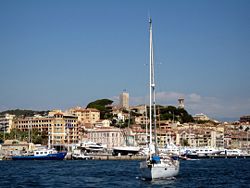
| |
| Location | |
| Longitude | 7.012753 |
| Latitude | 43.551347 |
| Administration | |
|---|---|
| Country | |
| Region | Provence-Alpes-Côte d'Azur |
| Department | Alpes-Maritimes |
| Arrondissement | Grasse |
| Mayor | David Lisnard (2020–2026) |
| Statistics | |
| Altitude | 0–260 m |
| Land area¹ | 19.62 km² |
| Population² (2019) |
74,545 |
| - Density (2019) | 3,800/km² |
| Miscellaneous | |
| INSEE/Postal code | 06029/ 06400 |
| ¹ French Land Register data, which excludes lakes, ponds, glaciers > 1 km² (0.386 sq mi or 247 acres) and river estuaries. | |
| ² Population sans doubles comptes: single count of residents of multiple communes (e.g. students and military personnel). | |
Cannes is a French commune located in the department of Alpes-Maritimes and the region of Provence-Alpes-Côte d'Azur. It is is one of the best-known cities of the French Riviera in southeastern France. Located on the Mediterranean Sea, it is 22 miles (36 km) from Nice, 34 miles (55 km) from Monaco and 37 miles (60 km) from the Italian border.
Essentially a modern resort town, it was originally settled by Celts, Greeks, and Romans. Along with the Lérins Islands, it has had a long involvement with monastic Christianity, although most of the city’s growth has occurred since the mid-1800s, when it became popular as a winter resort for the British.
The city is well known for the annual Cannes Film Festival, during which time its population swells from 70,000 to nearly 170,000. The festival was proposed during, and established following, World War II to oppose the interference of the fascist governments of Germany and Italy in film selection.
Geography
The name Cannes may derive from "canna," a reed, because the shore was once covered with reeds. Cannes is located on the crescent of the Gulf of Napoule, and is backed by a line of wooded hills.
Cannes has a Mediterranean climate, with January temperatures ranging from 43°F to 55°F (6°C to 13°C), and July, from 68°F to 81°F (20°C to 27°C). Despite high daytime temperatures during summer, from May to September, a Mediterranean breeze keeps summer evenings pleasant and cool. In winter, from December to February, the weather is mild. Both seasons have a relatively low rainfall, and most rain falls during October and November. Average annual precipitation is 21 inches (530mm).
Off the coast from Cannes, the Lérins Islands include the Île Sainte-Marguerite and the Île Saint-Honorat, as well as the smaller Îlot Saint-Ferréol and Îlot de la Tradelière, which are uninhabited.
The city of Cannes covers an area of 7.5 square miles (19.62 square kilometers). The 7.4-mile (12km) long, beautiful and glamorous stretch of La Croisette is the main tourist attraction. A breathtaking waterfront avenue lined with palm trees, La Croisette is known for its picturesque beaches studded with world-class resorts, restaurants, cafes, and designer boutiques.
Le Suquet is the quaint historic quarter, built on the site of a Roman military camp. It is the highest point in Cannes where lies the remains of a fortified tower, and the twelfth-century Chapel of St Anne. Le Suquet offers tourists breathtaking view of La Croisette. More peaceful residential neighborhoods, such as La Bocca, surround the lively city center.
History
The Cannes area was settled by the second century B.C.E., when Ligurian tribesmen created a settlement known as Aegitna. Later, the area was occupied by Phocaeans, from central Greece, and Celts, and was a fishing village, used as a link with the Lérins Islands.
In 69 C.E., the area became the scene of violent conflict between the troops of Othos, a village in Karpathos, Greece, and Roman Emperor Vitellius. Roman tombs in the area suggest Romans had an outpost on Le Suquet hill. The Lérins islands were inhabited during Roman times.
Saint Honoratus (350-429), who went to one of the islands as a hermit, founded the monastery of Lérins on the Île de Saint-Honorat, around the year 410. According to tradition, Saint Patrick (378-493), patron of Ireland, studied there. It was in this monastery that Saint Porcarius lived and probably was killed during an invasion by Muslim sea raiders around 732.
A fortified monastery was built between the eleventh and fourteenth centuries. An attack by Muslim sea raiders in 891, who remained until the end of the tenth century, devastated the country around Canua. The insecurity of the Lérin islands forced the monks to settle on the mainland, at Le Suquet. A castle was built in 1035 to fortify the city, by then known as Cannes, to guard against Muslim raiders. Construction of two towers on the Lérin Islands was started at the end of the eleventh century. One took a century to build, the other three centuries. Around 1530, Cannes became independent of control by the monks.
In 1635, the Île de Saint-Honorat was captured by the Spanish and the monks were expelled. They returned from exile in Vallauris two years later, when the island was retaken by the French.
The Île Sainte-Marguerite has a fortress where The Man in the Iron Mask was held captive from 1687 until he died in 1703. Under the French Revolution (1789–1799), the Île Sainte-Marguerite and the Île Saint-Honorat were renamed the Île Marat and the Île Lepeletier, after secular martyrs.
French general Napoleon Bonaparte (1769-1821) camped with his army outside the village in February 1815, on the first night away from Elba.
English Lord Henry Brougham (1778-1868), who became Lord Chancellor of the United Kingdom, began Cannes' reputation as a resort. When prevented by quarantine rules from entering Nice in 1834, he instead went to the nearby fishing village of Cannes. He enjoyed the experience so much that he returned every winter for 34 years. He bought land at the Croix des Gardes and constructed the villa Eleonore-Louise. His work to improve living conditions attracted the English aristocracy, who also built winter residences.
In June 1838, construction of Cannes harbor began. The population increased as people migrated there for work.
In 1859, the Bishop of Fréjus bought the Île de Saint-Honorat and sought to re-establish a religious community there. Ten years later, a Cistercian community was founded, which has remained there since. A monastery was built there during the nineteenth century.
In March 1898, the harbor was completed, and the Casino Municipal, a luxury establishment for the rich winter clientèle, and the Esplanade des Alliés, were built on each side of the harbor. At that time, railways were completed in Cannes, and streetcars were running. The Boulevard Carnot, the Rue d'Antibes, and the Carlton Hotel on the Promenade de la Croisette were constructed.
At that time Cannes depended on sea trade, fishing, agriculture, and small enterprises.
With the twentieth century came luxury hotels, such as the Miramar and the Martinez, a sports center, a post office, and schools. There were fewer British and German tourists after World War I (1914-1918), but more Americans visited. Winter tourism gave way to summer tourism and the summer casino at the Palm Beach was constructed.
The city council had the idea of an international film festival shortly before World War II (1939-1945), which has become an annual event. The first opened on September 20, 1946, held in the Casino Municipal. The casino was demolished and replaced by the new Palace in 1979.
Government
Cannes, including the Lérins Islands, is a commune of the Alpes-Maritimes département in the Provence-Alpes-Côte-d'Azur région of metropolitan (European) France. Cannes is governed by a municipal council and a mayor. The Alpes-Maritimes département is governed by a locally elected general council and a president. The general council passes laws, and is administratively responsible for departmental employees and land, manages subsidized housing, public transportation, and school subsidies, and contributes to public facilities. The Provence-Alpes-Côte-d'Azur région is governed by a directly elected regional council and a president.
In the French system of local government, responsibility is shared among different levels of administration. For instance, in the field of education, communes run public elementary schools, while départements run public junior high schools and régions run public high schools, but only for the building and upkeep of buildings; curricula and teaching personnel are supplied by the national Ministry of Education.
Economy
Cannes is a resort town, tourism is the city’s main source of revenue, and foreign visitors make up 40 percent of the traffic. There are several casinos.
The well-known Cannes Film Festival, which takes place there every year in May, is one of a number of large annual events. A television festival takes place in the last week of every September. Midem is a large market for disc and music. Mipim, which takes place each March, is a market for commercial buildings, apartments, and rental villas.
The area around Cannes has developed into a high-tech cluster. The technopolis of Sophia Antipolis lies in the hills beyond Cannes. The Film Festival is a major event for the industry.
The Cannes Mandelieu Space Center is an industrial plant dedicated to spacecraft manufacturing, located in both Cannes and Mandelieu. The company began manufacturing aircraft in 1929. The center became increasingly involved in the Aerospace activities after the Second World War, with satellites becoming the plant's main product.
Cannes had 6,500 companies in 2006, of which 3,000 were traders, artisans and service providers. In 2006, 421 new companies were registered.
The city has an international market for flowers, especially mimosa, which has flourished in the region since its introduction from Santo Domingo in 1835.
TGV rail services provide access from major French cities, as well as from Brussels, Milan, Basel, Rome, and Venice. The journey by road from Paris takes eight hours via the A8 motorway. Yachts and transatlantic liners visit Cannes harbor. Ferries are available from Bastia and Calvi in Corsica. The Cannes-Mandelieu Airport is located three miles (five km) west of Cannes and east of Mandelieu-la-Napoule. Located 15 miles from Cannes, the Nice Côte d’Azur Airport has close to ten million passengers a year.
Cannes film festival
The Cannes Film Festival (French: le Festival de Cannes), founded in 1946, is one of the world's oldest, most influential, and prestigious film festivals alongside those of Venice and Berlin. The private festival is held annually (usually in the month of May) at the Palais des Festivals et des Congrès.
At the end of the 1930s, shocked by the interference of the fascist governments of Germany and Italy in the selection of films for the Mostra de Venise, Jean Zay, the French Minister of National Education, decided to create an international cinematographic festival in France. Cannes was selected as the location, and Le Festival International de Cannes was born.
The Cannes Film Festival is organized in various sections. In the main event, known as "The Official Selection," in the main competition, 20 films compete for the Palme d'Or; in the "Un Certain Regard" section, 20 films are selected from various cultures; in the "Out of Competition" section, films are shown but do not compete; the "Special Screenings" section shows special-interest films; the "Cinéfondation" section includes about 15 short and medium-length motion pictures from film schools; and there is a Short Film Palme d'Or.
The Parallel Sections are non-competitive programs which includes Cannes classics; world cinema; the Caméra d'Or that rewards competition" films on Macé beach.
Society and culture
Nineteenth-century Cannes can still be seen in its grand villas, built to reflect the wealth and standing of their owners and inspired by anything from medieval castles to Roman villas. Lord Brougham’s Italianate Villa Eléonore Louise, one of the first in Cannes, was built between 1835 and 1839. Also known as the Quartier des Anglais, this is the oldest residential area in Cannes. Another landmark is the Villa Fiésole (known as the Villa Domergue) designed by Jean-Gabriel Domergue in the style of Fiesole, near Florence.
The cell of the Man in the Iron Mask can be visited in the Fort of St. Marguerite, now renamed the Musée de la Mer (Museum of the Sea). This museum houses discoveries from shipwrecks off the island, including Roman (first century B.C.E.) and Muslim (tenth century C.E.) ceramics.
Cistercian monks are the only inhabitants of the smaller, southern St. Honorat Island. Medieval vestiges remain in the stark church, which is open to the public, and in the ruins of the eleventh-century monastery on the sea’s edge. The monks divide their time between prayer and producing red and white wines.
The Musée d'Art et d'Histoire de Provence houses artifacts from prehistoric to present, in an eighteenth-century mansion. The Musée de la Castre has objects from the Pacific Atolls, Peruvian relics and Mayan pottery. Other venues include the Musée de la Marine, Musée de la Photographie and Musée International de la Parfumerie.
Cannes is not renowned for traditional theater. However, there are small venue stage productions and it hosts short sketches during the annual International Actors’ Performance Festival. Popular theaters include the Espace Miramar and the Alexandre III.
Other events of interest include:
- The Carnival on the Riviera, which is an annual parade through the streets to mark the 21-day period prior to Shrove Tuesday.
- The International Festival of Games, a festival of bridge, belote, backgammon, chess, draughts, tarot and more, which takes place each February.
- The Festival de la Plaisance, which is an event for boating enthusiasts in the Vieux Port(September).
Looking to the future
Settled by Celts, Greeks, and Romans, Cannes and the Lérins islands have had a long involvement with monastic Christianity, although most of the city’s growth, as a resort, has occurred over the past 170 years.
The Cannes Film Festival was established to oppose the interference of the Fascist governments of Germany and Italy in film selection. As cinema continues to exert a strong influence on world culture, the festival can play an important role to either the improvement or degradation of world culture.
With perhaps the world’s top film festival, a growing aerospace industry, and a steady influx of wealthy tourists, Cannes can expect to remain a wealthy town, and an important contributor to the powerful and wealthy nation of France.
ReferencesISBN links support NWE through referral fees
- Benecke, Amy M. Cannes and Its Surroundings. Wentworth Press, 2019 (original 1908). ISBN 0526335750
- Craig, Benjamin. Cannes - A Festival Virgin's Guide. Cinemagine Media Publishing, 2018. ISBN 1999996100
- Dewitte, Ysabel. The Story of the Four Towns: Nice, Monaco, Cannes, Menton. London: John Hamilton, 1929.
- Servat, Henry-Jean. In the Spirit of Cannes. New York: Assouline, 2004. ISBN 9782843236105
External links
All links retrieved November 25, 2023.
- Cannes official site
- Cannes Film Festival (French) (English)
- Cannes Lions International Festival of Creativity
Credits
New World Encyclopedia writers and editors rewrote and completed the Wikipedia article in accordance with New World Encyclopedia standards. This article abides by terms of the Creative Commons CC-by-sa 3.0 License (CC-by-sa), which may be used and disseminated with proper attribution. Credit is due under the terms of this license that can reference both the New World Encyclopedia contributors and the selfless volunteer contributors of the Wikimedia Foundation. To cite this article click here for a list of acceptable citing formats.The history of earlier contributions by wikipedians is accessible to researchers here:
The history of this article since it was imported to New World Encyclopedia:
Note: Some restrictions may apply to use of individual images which are separately licensed.

